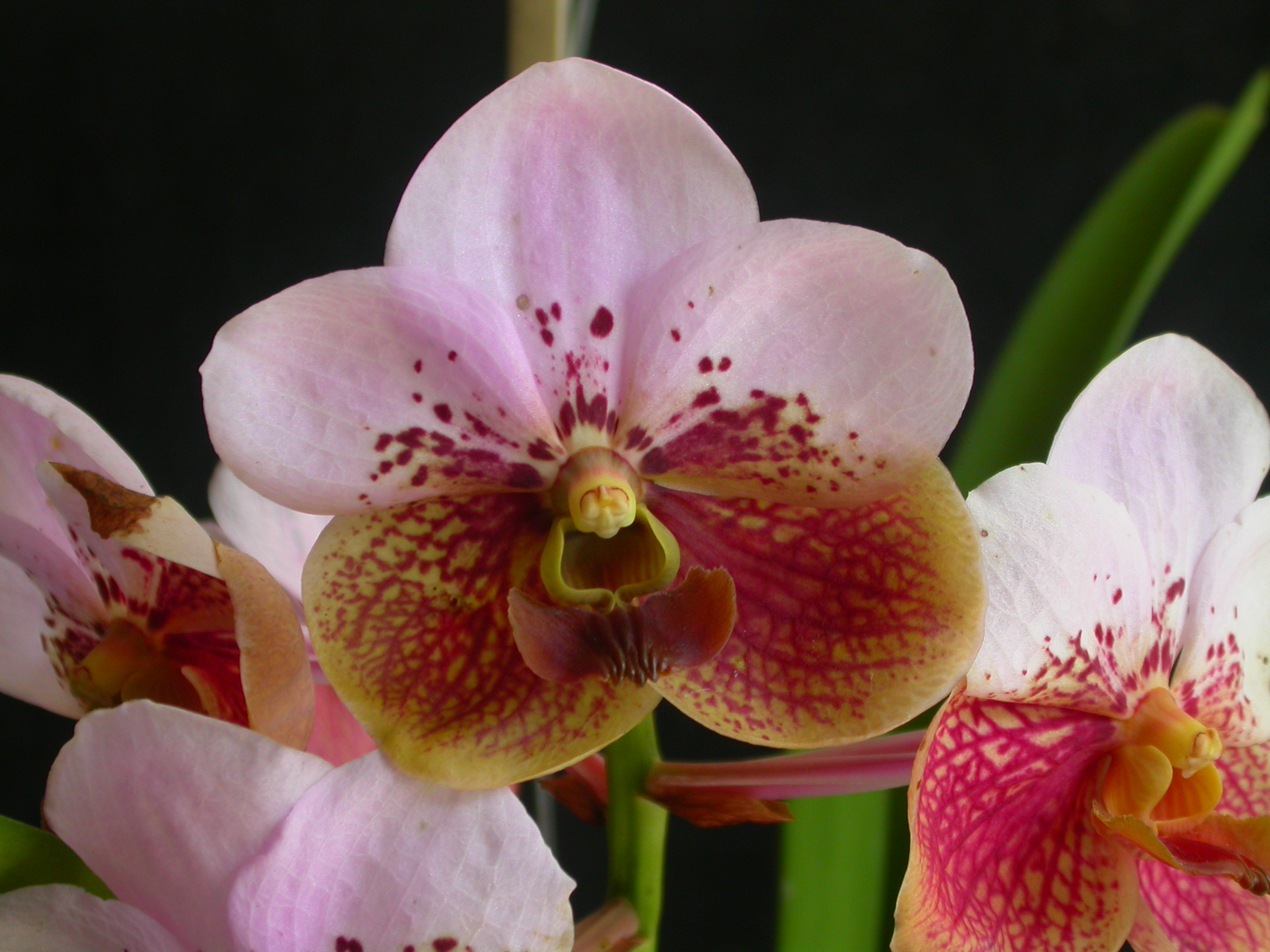|
Amesiella Minor
''Amesiella minor'' is the smallest species of the genus ''Amesiella''. These miniature epiphytic orchids are native to the Philippines. Ecology and habitat This species grows on the island of Luzon at heights of 1200 m a.s.l.IOSPE PHOTOS. (n.d.). Retrieved October 2, 2022, from http://www.orchidspecies.com/amesminor.htm Discovery It was described by the German botanist Karlheinz Senghas in 1999. Description These miniature, cool-growing, monopodial herbs form small, leathery leaves. ''Amesiella'' has white flowers with long spurs. The morphology of the spur suggests moth pollination. The flowers have two gold coloured, vertical stripes on the lateral lobes of the labellum, which is similar to ''Amesiella philippinensis''. The flowers of ''Amesiella minor'' are considerably smaller, which is also referred to in the specific epithet "minor", which means "small" in Latin.minor- Latein-Deutsch Übersetzung im Latein-Wörterbuch von Navigium. (n.d.). Retrieved October 2, 2022 ... [...More Info...] [...Related Items...] OR: [Wikipedia] [Google] [Baidu] |
Karlheinz Senghas
Karlheinz Senghas (7 April 1928 – 4 February 2004) was a German botanist and orchidologist. He was a curator, scientific director, and academic director of the University of Heidelberg's Botanical Garden from 1960 until his retirement in 1993. He was also president of the Deutsche Orchideen-Gesellschaft in the 1970s and was the co-publisher and editor of several volumes of ''Die Orchideen'', a continuation of the publication begun by Rudolf Schlechter Friedrich Richard Rudolf Schlechter (16 October 1872 – 16 November 1925) was a German taxonomist, botanist, and author of several works on orchids. He went on botanical expeditions in Africa, Indonesia, New Guinea, South and Central America and .... He described his first orchid species, '' Aerangis buchlohii'' in 1962. Over the years, he contributed more than 300 publications on orchids and established 17 new orchid genera and 388 species. Several genera and species are named in his honor, including the orchid genera '' Sen ... [...More Info...] [...Related Items...] OR: [Wikipedia] [Google] [Baidu] |
Amesiella
''Amesiella'' is a genus of orchids endemic to the Island of Luzon, in the Philippines. Taxonomy Previously it was believed that the species of this genus belonged to the genus ''Angraecum'' within the subtribe Angraecinae. The genus is named for Oakes Ames (1874-1950), founder of the orchid herbarium at Harvard University Harvard University is a private Ivy League research university in Cambridge, Massachusetts. Founded in 1636 as Harvard College and named for its first benefactor, the Puritan clergyman John Harvard, it is the oldest institution of higher le .... Description These short-stemmed, miniature epiphytes form elliptic, coriaceous, distichous leaves. White flowers with pronounces spurs, indicating moth pollination, are formed on short, axillary racemes. Genera Orchidacearum Volume 6: Epidendroideae (Part 3) Alec M. Pridgeon / Phillip J. Cribb / Mark W. Chase / Finn N. Rasmussen 2014 OUP Oxford ISBN 978-0-19-100389-9 Species As of May 2014, three spec ... [...More Info...] [...Related Items...] OR: [Wikipedia] [Google] [Baidu] |
Amesiella Philippinensis
''Amesiella philippinensis'' is a species of orchid endemic to the Island of Luzon in the Philippines. Like ''Vanda falcata'' it was mistaken as an ''Angraecum The genus ''Angraecum'', abbreviated as Angcm in horticultural trade, common name comet orchid, contains about 220 species. Etymology Despite the genus's distribution being largely confined to Africa and its offshore islands, the genus name is a ...'' species, due to the white, long-spurred flowers. The plant produces rounded leaces up to 5 cm in length. Three or four white, fragrant flowers of 3 cm in width are produced on short inflorescences. The labellum is yellow in the throat. It occurs at lower altitudes than '' Amesiella monticola'' and has a shorter spur.Banks, D. (1999). Tropical Orchids of Southeast Asia. Tuttle Publishing. References External linksIOSPE orchid photos ''Amesiella philippinensis'' [...More Info...] [...Related Items...] OR: [Wikipedia] [Google] [Baidu] |
Orchids Of The Philippines
There are about 141 genera of orchids representing about 1,100 orchid species, 900 of which are described as endemic to the Philippines. Many of them have showy, brightly colored and attractive flowers. ''Vanda sanderiana'' is unofficially dubbed the National Flower, as the only representative of the species is unique to the Philippines and is only found on the island of Mindanao. ''Abdominea'' *'' Abdominea minimiflora'' ''Acampe'' *'' Acampe rigida'' ''Acanthophippium'' *'' Acanthophippium mantinianum'' endemic to the Philippines *'' Acanthophippium sylhetense'' '' Acriopsis'' *'' Acriopsis indica'' *'' Acriopsis liliiflolia'' ''Aerides'' A genus with species that have showy flowers, and in the Philippines, characterized by the presence of fleshy looking spurs. The special feature of this flower is the fragrance some of the species of this genus has. *''Aerides augustiana'' endemic to the Philippines *'' Aerides inflexa'' *'' Aerides lawrenceae'' endemic to the Philippin ... [...More Info...] [...Related Items...] OR: [Wikipedia] [Google] [Baidu] |
Epiphytic Orchids
An epiphyte is an organism that grows on the surface of a plant and derives its moisture and nutrients from the air, rain, water (in marine environments) or from debris accumulating around it. The plants on which epiphytes grow are called phorophytes. Epiphytes take part in nutrient cycles and add to both the diversity and biomass of the ecosystem in which they occur, like any other organism. They are an important source of food for many species. Typically, the older parts of a plant will have more epiphytes growing on them. Epiphytes differ from parasites in that they grow on other plants for physical support and do not necessarily affect the host negatively. An organism that grows on another organism that is not a plant may be called an epibiont. Epiphytes are usually found in the temperate zone (e.g., many mosses, liverworts, lichens, and algae) or in the tropics (e.g., many ferns, cacti, orchids, and bromeliads). Epiphyte species make good houseplants due to their minimal wat ... [...More Info...] [...Related Items...] OR: [Wikipedia] [Google] [Baidu] |



